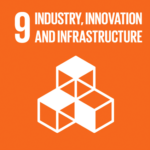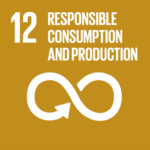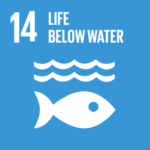Meet the Scientists of the Future Bioeconomy part 1: Using microbes to create new bioplastics
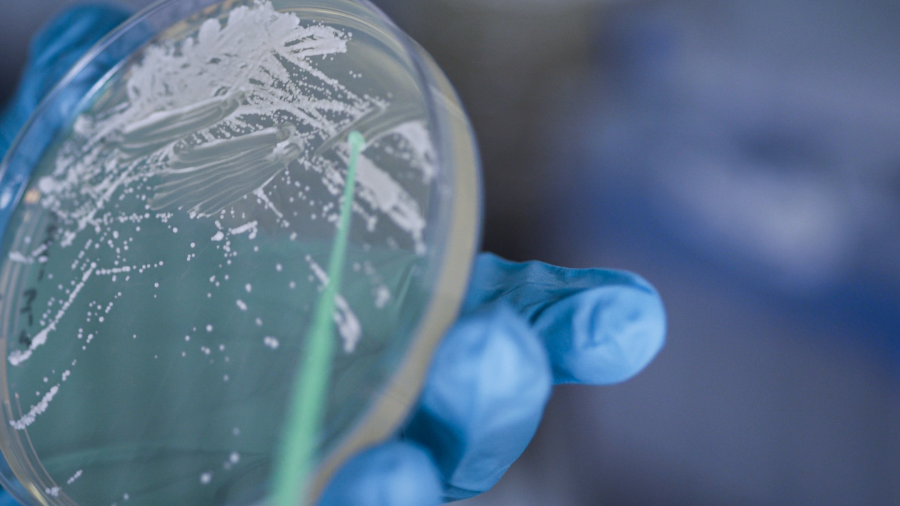
Blog - Published 9.11.2020
Research scientist Anna Ylinen is doing her doctoral thesis at the Center for Young Synbio Scientists on microbial bioplastics. They can be used like traditional plastics, but have the additional benefit of being biodegradable and fully biobased, so they are made from renewable resources, not from oil. Her goal is to produce these new biopolymers by modifying yeasts and using forest industry side-streams as feedstock. The development of bioplastics is an important step towards a sustainable circular economy and it concretely contributes to several of the UN sustainable development goals.
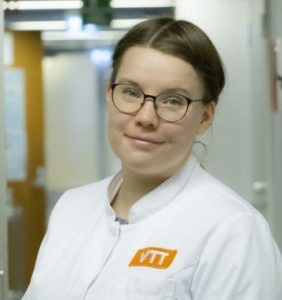
Contemporary society is completely dependent on fossil-based plastics, with hundreds of tailored and highly specific polymers meeting thousands of different needs. From the smallest biomedical and electrical applications to our entire food supply chain, in addition to enormous industrial applications, plastics are quintessential in modern life.
In many applications, fossil-based plastics serve their purpose well, are efficiently recycled and create minimal if any damage to our environment. But the major part of plastics, in spite of our best intentions, end up in our oceans and natural ecosystems. They should be replaced with materials that disintegrate without leaving harmful residues. And they should be made of renewable raw materials wherever possible. In other words, bio-based and biodegradable must go hand-in-hand. For scientists this creates a paradoxical challenge – how do we create materials that are simultaneously durably water-resistant and yet genuinely degradable in water?
Microbes as plastic producing factories
The solution can be found in nature, as is often the case also in synthetic biology. Doctoral student Anna Ylinen’s research aims at engineering baker’s yeast to produce water resistant and biodegradable PHA polymers (polyhydroxyalkanoates). These polymers are ideal because they are essentially food for microbes. They are stored as small granules inside the cell and serve as the “rainy day” food reservoir for the microbe itself. They also protect the microbe from different stress factors, such as UV rays and extreme temperatures.
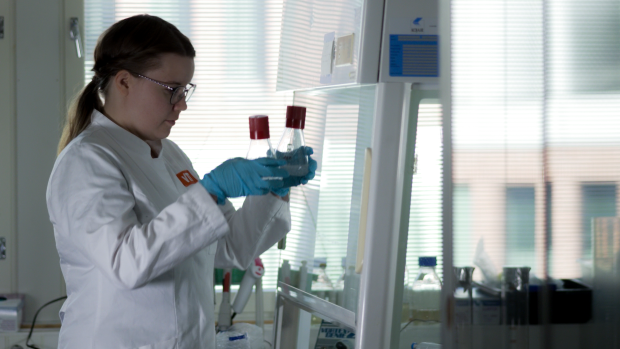
Different PHA polymers have different physical and chemical properties which make them possible replacements for varying fossil-based plastics. Part of Ylinen’s research is focusing on further modifying polymer properties by changing their building blocks and order in the polymer chain. The goal is to make new biodegradable polymers with different properties, for example stronger, stretchier or more transparent than before.
Degrading microbes exist widely in nature and are found in soils, seas and lakes, among other places. Thus a product made out of PHA would tolerate, for example, tap water, but be degraded (eaten by microbes) in the sea.
Replacing chemistry with cell engineering
Microbes have already helped us produce biodegradable bioplastics for decades. PLA (Polylactic acid) is made from lactic acid which in turn is produced by fermenting sugars with baker’s yeast or other microbes.
Currently the polymerization of lactic acid is done in a chemical process requiring energy and metallic catalysts. In the future, the same could be done by yeast cells in a biological process. The polymerisation capabilities of microorganism have been used industrially for a while, but commercial production quantities have been moderate in comparison to other plastics. In addition, production has been limited mainly to a few of the most common PHA types found in nature. Synthetic biologic methods help to solve many of the challenges related to PHA production. In the future, it might be possible to use a wide range of different side streams and wastes as raw materials instead of cultivated sugars. Also, material properties will be more versatile enabling use in many different applications. Research is now also focusing on making production more efficient and on lowering the final material costs. Thus more consumers would have access to these amazing materials in the future.
Waste as raw material
An additional advantage to microbes compared with current chemical processes is that they are naturally adapted to utilize mixed feedstock. They can selectively find and eat the sugars from a fairly messy waste source. In standard chemical processes, mixed waste streams usually have to be treated carefully to separate the desired fractions. In the future, we could use microbes to replace costly and energy intense industrial processes when using heterogeneous raw material as feedstock. Yeasts are also naturally adapted for acidic conditions, which makes them ideal candidates for use with acidic industrial sidestreams.
Anna Ylinen’s ambition is to engineer a yeast cell to use hemicellulose as its feedstock. This sugar is a massive sidestream of the forest industry, reaching up to 1,75 million tons annually in Finland alone. Hemicellulose breaks down during processing into many different compounds, including organic (hydroxy) acids like lactic acid, which could then be used by the yeast cells for PHA production.
The United Nations sustainable development goals that Finland is also committed to, state that we have to promote sustainable industrialization, foster innovation and ensure sustainable consumption and production patterns. The development of bioplastics is a concrete step towards reaching these goals. The protection of sea ecosystems and the sustainable use of its natural resources is also registered as one of the UN goals. The plastic waste ending up in the seas is a large scale global environmental problem that needs to be solved urgently. Microbe-based bioplastics can be an essential part of that solution.
Agenda2030
The development of bioplastics is an important step towards a sustainable circular economy and provides concrete support for a number of UN Sustainable Development Goals, such as 9: Sustainable industry, innovation and infrastructures, and 12: Ensure sustainable consumption and production patterns. In addition, the plastic waste ending up in the seas is a large scale global environmental problem and microbe-based bioplastics that decompose in the sea can be one solution. Thus, this study also contributes to the goal 14: Conserve the oceans, seas and marine resources.
Meet the Scientists of the Future Bioeconomy
The future of our bioeconomy is in the making. In this series we present the scientists and science behind the groundbreaking discoveries that will have a great impact on a sustainable circular bio economy. How will synthetic biology, advanced biomaterials research and new applications using lignocellulosic fractions contribute to a more sustainable future? In this series you will be invited behind the scenes to meet some of our most brilliant young scientists working on solving some of the most pressing challenges of our time.

